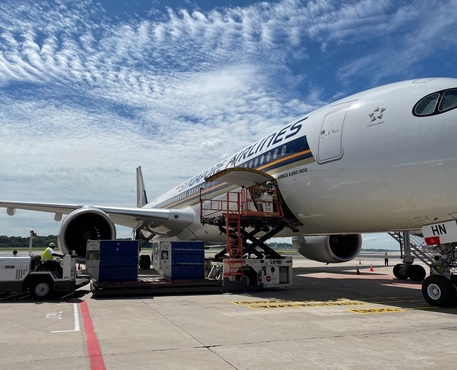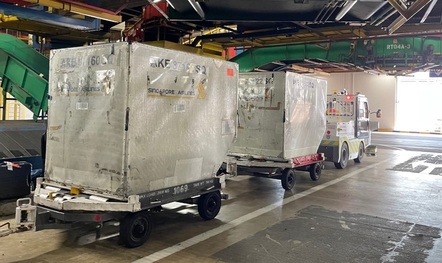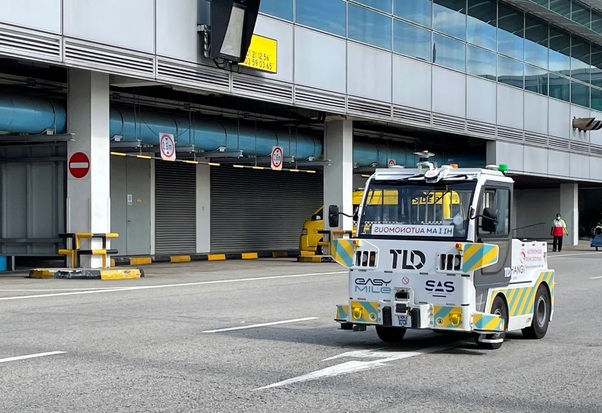Driverless solution for baggage transportation
EasyMile is collaborating with Singapore’s Changi airport to help transport baggage across the aircraft site.
The TractEasy driverless tractor, which has a maximum speed of 15 km/h, pulls up to four unit loading devices (containers used to load luggage onto aircraft), transporting them from the airports baggage handling area to the aircraft bay.
The autonomous tractor is supported by a multitude of equipment, including lidar (light detection and ranging) sensors, high-definition cameras, GPS, and 4G and wi-fi connectivity. These mean the vehicle’s location can be tracked, with accuracy to within a centimetre. Project partners include gateway services provider SATS with the support of the Singapore’s Civil Aviation Authority. It is EasyMile’s second major deployment in Singapore, following a shuttle bus trial on the National University of Singapore campus, in conjunction with transport operator ComfortDelGro and vehicle dealership InchCape.

Baggage tractors for the airports of the future
While the TractEasy currently has the ability to pull up to six tonnes of baggage, there is the potential to increase this pulling capacity in future.
Airside workers engage in a multitude of tasks as part of airside operations. One of the largest is transporting passenger baggage between the aircraft and baggage handling area (BHA). There are currently about 400 conventional baggage tractors serving Changi Airport, making up around half of all vehicles used on site. As Changi Airport Group (CAG) explores ways of allowing staff to focus on higher value-added jobs, trialling autonomous baggage tractors was a natural place to start.
With a single flight served by multiple baggage tractors, the trial has started with three autonomous tractors, which CAG believes is a “meaningful number” to test their use in turning around flights, This is in line with CAG’s vision of an airport for the future, where airside workers are focused on higher value-added jobs, supported by autonomous vehicles.

Part of a vision for a more autonomous future
Despite the impact of Covid-19 on the air travel industry, CAG has continued to explore the potential of greater innovation and technology. In fact, with fewer vehicles airside, there has been an opportunity for CAG’s Airside Transformation Office to trial the transfer of baggage between aircraft and the baggage handling area (BHA) using autonomous tractors.
The vehicles were first tested out in the airport’s Terminal 4 while flights were suspended due to the pandemic, monitoring their ability to follow mapped routes in an environment without other vehicles. Now the tractor is being deployed in a ‘live’ environment in Terminal 3, sharing the route with other vehicles as the airport welcomes the return of passengers.
We've just completed the proof of concept, and we're moving towards live flight operations with our ground handling partners, mainly SATS, to see how this tractor can supplement existing live flight operations

